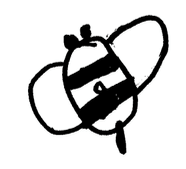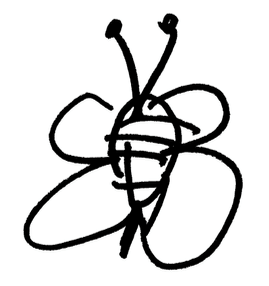As teachers, we are constantly making decisions. Choosing how to respond, to the events in any given day, is never a neutral undertaking. Our decisions have impact on not only our own experience, but also that of the children we teach and the communities around those children. Our decisions and practice are positioned in a complex web of relationships, influenced by competing and continually changing circumstances and priorities. Stepping up to this responsibility to make decisions wisely, and embracing the opportunity to shape life within our centres and schools, can feel like a heavy burden if we venture into the task alone. The significance of our influence and power in shaping and leading culture, invites us to wrestle together to find wisdom and clarity in the big and small decisions we face daily.
To decide well, we must also think well, and to think well, we must reflect well. It is crucial that we find effective strategies to regularly reflect on our decision-making and practice, both as individuals and within teams of educators. Sounds straightforward enough, but in the ‘busy’ness of our work, reflecting on our practice can prove more challenging than it first sounds. Also, when talking with others about how things are going, we can quickly find ourselves in the smoky space where our professional reflections intersect with our personal identities. How can we talk with clarity about decisions we feel so personally about? If my reflections might hurt your feelings, am I likely to hide my insights, or mask them somehow, and if so, how do we develop together as educators?
In my work with teams, it has been valuable to agree together up front about the ways we will make our daily practice visible and open to question. By choosing the methods and means by which we will review our decisions and programs we make a shared commitment to teach with intention, and not by accident. In this way, teams of teachers create permission and opportunity to ask questions of one another, taking teaching into a public forum. In too many situations, teachers are positioned (or position themselves) as solo operators, working side by side, but not necessarily together. When we work in ways that separate us from our shared story and the possibility of being influenced by one another, we offer children a diminished landscape for learning. It is crucial that we disrupt isolated approaches to teaching that keep our pedagogical decisions private and unquestioned. Professional practice requires our teaching to be open to discussion, open to question and open to change.
New and refreshing ways teachers relate to one another necessarily include rich and complex dialogue, shaped by questions presented from a desire to understand, rather than from an agenda to interrogate and accuse. No longer positioned to simply compare themselves from a distance, teacher questioning, conversation and public reflection position teachers as companions on a road, championing each other towards excellence and professional growth. To protect the potential value of our work together it is therefore essential to establish an atmosphere of professional trust. When we take time to build trust and articulate our expectations and hopes, we are equipped to travel together into more uncertain conversations and explore with more confidence what is possible. It is in this atmosphere of trust that it is possible to share the art and elegance of teaching together.
One hindrance to this work together can be our tendency to operate from a ‘business as usual’ attitude, leaving daily decisions and responses mostly unquestioned. Although it would not be practical (nor wise) for any of us to question everything/all the time, it can be equally dangerous for us to do the opposite. When we forget to make time for reflection and to question what is informing our choices, we can accidentally limit growth and change. This ‘business as usual’ approach usually works until we are disrupted by encounters that do not fit into our expectations or by actions that challenge our ‘normal’. Sometimes it takes someone crossing our boundaries for us to realise where they are. When this happens and our ‘business as usual’ is interfered with, the disruption carries with it, a gift, making visible what matters most.
Disruptions (often disguised in the form of other people) have an awakening potential, especially if we choose to embrace the moment and determine to learn from our experiences. Disruption (and letting others in) awakens us, bringing into focus what would normally be hidden, seemingly dormant. When this happens it can be difficult, messy and at times inconvenient. Suffice to say, when we begin to invite others to comment on and question our teaching decisions and practice, things can get prickly. And our work is no longer straightforward. Leo Tolstoy invites us to approach with care:
“It is a mistake to think that there are times when you can safely address a person without love.
In the same way as you cannot work with bees without being cautious, you cannot work with people without being mindful of their humanity.”
Leo Tolstoy, 1908


This invitation to approach with love (defined by me as approaching with deep intention and concern for the other’s well being and growth) reminds me of a metaphor introduced to me by a friend and fellow educator. In a staff meeting one afternoon, Skender asked a question that stuck in my heart and mind like glue. He invited our team to reflect on the choices we would be making in our relationships that year - with students, families and each other. He inquired, “Would we be building bridges or walls in our relationships? Would our conversations, responses, and actions lead to deeper connections (bridges), or would they cause us to shrink back and separate ourselves from the influence of one another (walls)?”
Other than the obvious commitment to building strong relationships and creating connections, what I love about Sken’s metaphor is the way in which it highlights our power to choose our responses. We always have within us the power to choose our ‘stance’ in our circumstances. This might sound obvious, but I’m not sure that it is. We are not stuck. We have options. With this freedom to choose, the possibilities and options afforded to us are not inevitable, but infinite.
Listening is one sure way to build bridges. It communicates value to others and recognises that we need one another. Professor Carla Rinaldi, educational thinker from Reggio Emilia, Italy, once remarked that true listening requires a willingness to change your mind. In her words, “Listening is not easy. It requires a deep awareness and a suspension of our judgments and prejudices. It requires openness to change. It demands that we value the unknown, and overcome the feelings of emptiness and precariousness that we experience when our certainties are questioned.” (Rinaldi, 2001, p.3). Listening requires us to recognise what we do not know and cannot see about our situations and ourselves. It makes visible multiple perspectives and invites learning and insight from beyond the boundaries of our limited experiences. It acknowledges that wisdom is worked out in relationships and our identity is shaped in a web of complexity and interaction. Listening leads us towards otherness and invites us to embrace and make room for difference.
Empathy is another great bridge builder. It is important to make time to get to know those with whom we work. Creating opportunities for members of a team to be together regularly and in many different contexts can prove strengthening in the way time for relationship makes room for our shared humanity and creates a culture of connection. Asking open questions like, “What will help you flourish at work?” and “What helps you bounce back?” can offer rich insights that can inform our decision-making and create a context for empathetic professional partnerships. Last year, I worked in close partnership with another teacher. Key to our success was recognising our differences and learning about each other. I am a wordy, spiraling, outward and verbal processor - I talk to think. Anna, processes internally and thoughtfully and needs time to be on her own to work things through. Had we not identified this early on in our work together, our needs would have been in continual conflict. Instead, with recognition of our different needs and processing styles we were able to make choices about how we would work together and how we could honor and protect our different needs. In so doing, our differences became strengths, rather than weak links in our team.
Making ourselves, and in turn our decisions visible and open to question, is key to shifting our pedagogical focus away from ‘business as usual’ towards a better and intentional hope for the future of education. When we are willing to bring what is informing our decisions into the light, and when we bring our beliefs into dialogue with others, we find that human flourishing exists mysteriously within the encounters between ideas, people and our world. Our profession in turn finds it’s meaning as we live it out amongst friends.
References
Rinaldi, C. (2001). The pedagogy of listening: The listening perspective from Reggio Emilia. In Innovation in Early Education: the International Reggio Exchange, 8 (4).
Tolstoy, L. (1908). A Calendar of Wisdom: Daily Thoughts to Nourish the Soul.



Recommended Comments
There are no comments to display.